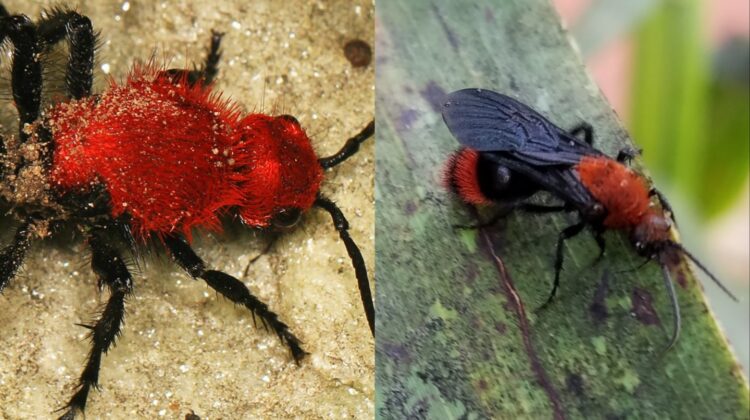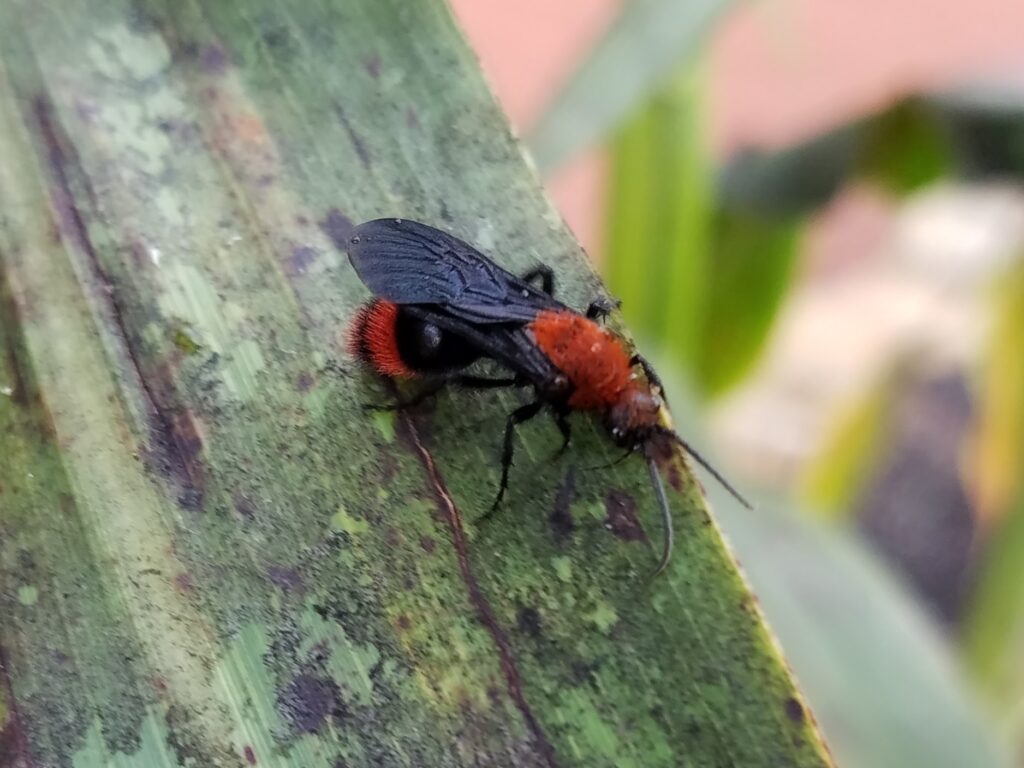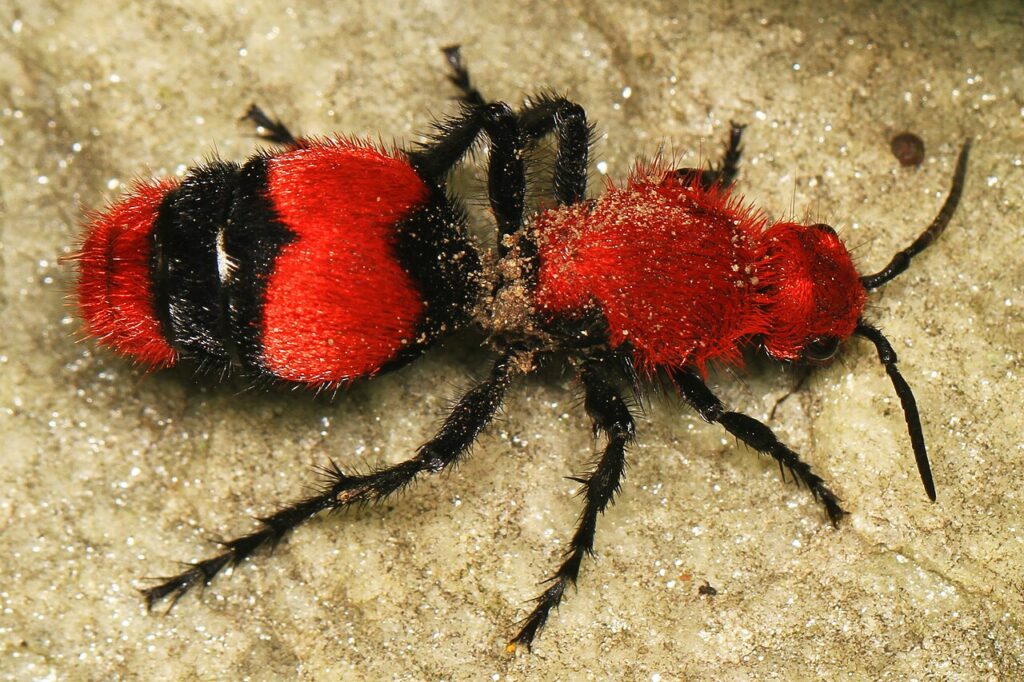
Description and Biology
Dasymutilla occidentalis, commonly known as the red velvet ant, is a parasitoid wasp species native to the eastern United States. The species is often mistaken for a true ant, as females are wingless, but it can be recognized by its distinctive red coloring, with a black stripe that goes across the abdomen. Adult red velvet ants are the largest of the velvet ant species in the eastern United States, reaching an approximate length of 0.75 in (1.9 cm). They are covered in dense, velvet-like hair and display aposematic coloration, consisting of black overall coloring with an orange-red pattern on the dorsal surface of the thorax and abdomen.

Females seek out the brood cells of Eastern cicada killers, horse guard wasps, and other large ground-nesting members of Crabronidae, where they deposit an egg onto a host larva. The egg quickly hatches into a white, legless grub, which consumes the host and goes through several larval stages prior to pupation. Males, on the other hand, have dark, translucent wings and do not possess a sting. They fly low over grass in search of mates. Both males and females make a squeaking noise (stridulation) to warn potential predators.

Defense Mechanisms
The red velvet ant has multiple defense mechanisms to protect itself from potential predators. They have a thickened exoskeleton, which makes them difficult to crush or kill. They are also quick-moving and often take a defensive posture when threatened. Additionally, they have warning coloration and make stridulatory warning sounds to alert predators. They also have a chemical secretion and venom, which can cause an extremely painful sting. Because of this painful sting, they are often called “cow killers.”

Got ’em in SE UT. and SW CO. too.